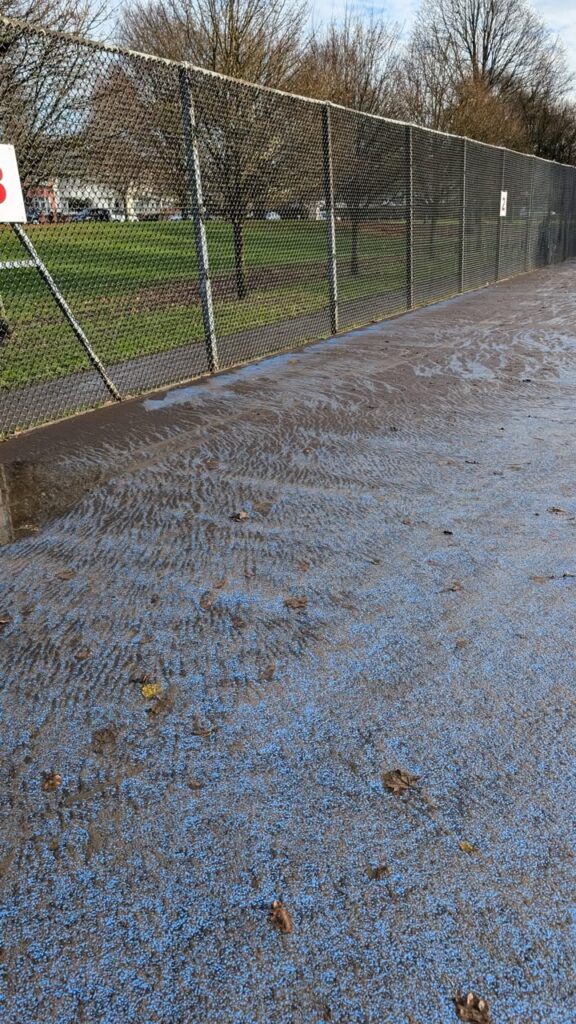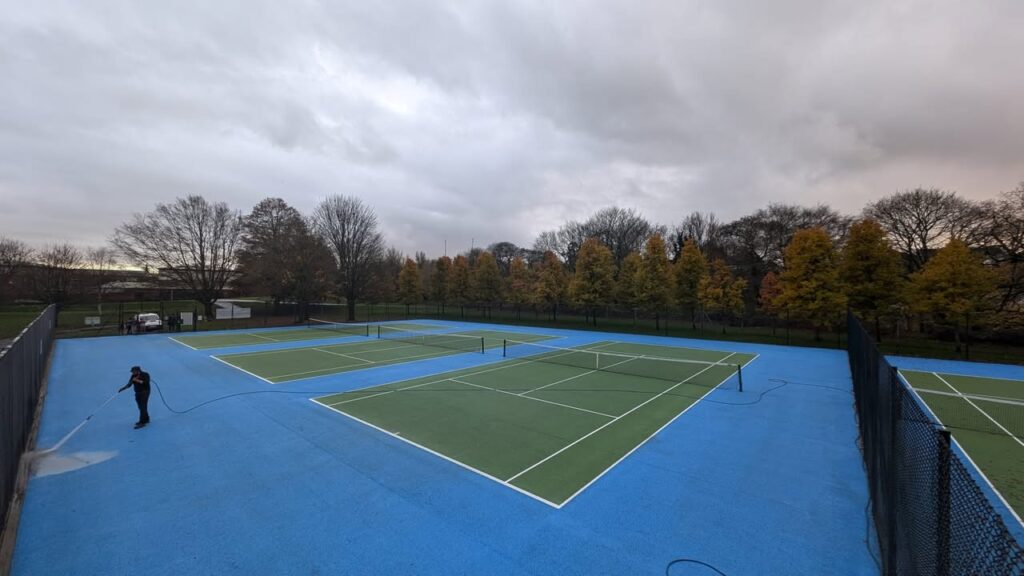Flooded Tennis Court covered in mud
Flooded tennis courts, especially those covered in mud, present a significant challenge. Proper cleaning not only restores the court’s playability but also ensures its longevity. Here’s a step-by-step guide to effectively clean a tennis court affected by flooding and mud.
1. Assess the Damage
Start by evaluating the extent of the flooding and mud coverage. Check for:
- Water depth and duration of exposure.
- Any structural damage, such as cracks or depressions.
- Debris like leaves, branches, or trash.
- The type of court surface (clay, hard, or grass), as this will influence cleaning methods.
2. Gather the Right Tools
Ensure you have the necessary equipment, such as:
- High-pressure water hoses or pressure washers (avoid overly aggressive settings for delicate surfaces).
- Push brooms and squeegees.
- Shovels and buckets for removing debris.
- Court-safe cleaning solutions (pH-neutral is best).
- Personal protective equipment (gloves, boots, and masks).
3. Remove Standing Water
Use pumps or squeegees to remove any standing water. Begin at the highest point of the court, working your way to the lowest point. This step prevents further water absorption and potential surface damage.

4. Clear Debris
Manually remove large debris such as leaves, twigs, and trash. For smaller particles like gravel or silt, use a broom or vacuum designed for outdoor use. Take care to avoid scratching or damaging the court surface.
5. Loosen and Remove Mud
Mud can be tricky, as it may have bonded to the surface. Follow these steps:
- Begin with a gentle rinse to soften the mud.
- Use a push broom or squeegee to push the loosened mud off the court.
- For stubborn areas, apply a court-safe cleaning solution and scrub lightly with a soft-bristle brush.
- Rinse thoroughly after scrubbing.
6. Inspect for Stains and Residual Dirt
Floodwater often leaves stains and residues. Spot-clean areas with a pH-neutral detergent, ensuring it’s safe for the court’s surface. Rinse immediately to prevent any damage.
7. Dry the Court
Proper drying is crucial to avoid surface deterioration. Use:
- Squeegees to remove excess water.
- Air blowers to speed up drying.
- Natural sunlight and wind, which are free and effective.
Avoid play until the court is completely dry to prevent further damage or injuries.
8. Inspect and Restore Court Lines
Flooding and mud may damage court markings. Once the court is clean and dry, inspect the lines for fading or erosion. Repaint or touch up the lines if necessary, using products designed for your court type.
9. Apply Preventive Measures
To minimize future damage from floods:
- Ensure proper drainage systems around the court.
- Regularly clean and maintain the court to prevent debris buildup.
- Consider installing barriers or covers for additional protection.

Final Thoughts
Cleaning a flooded tennis court covered in mud is a time-intensive process, but with the right approach and tools, you can restore it to optimal condition. Always tailor your cleaning methods to the court’s surface type and seek professional help for extensive damage or repairs. By staying proactive, you can ensure your tennis court remains in excellent shape for years to come.


